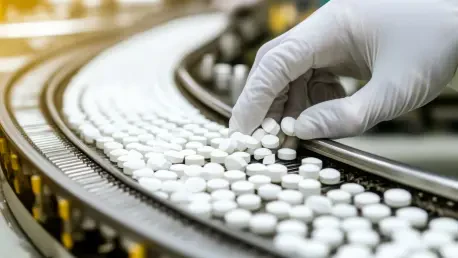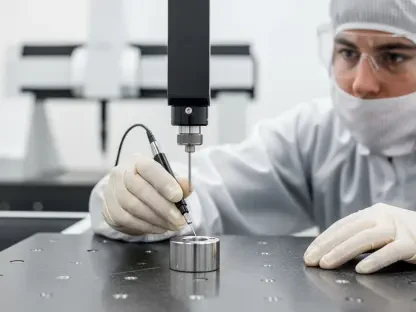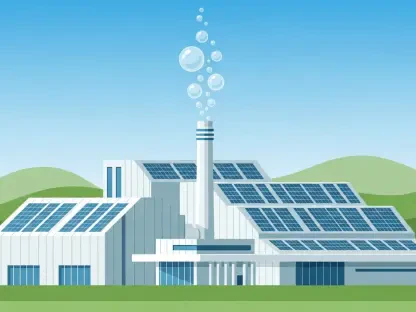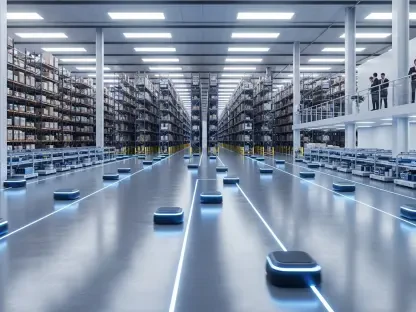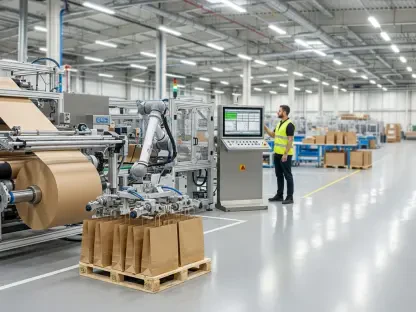In a significant move aimed at reshaping the landscape of U.S. drug manufacturing, President Donald Trump signed an executive order on May 5, 2025. This directive mandates the Food and Drug Administration to accelerate the creation of new drug manufacturing facilities within the United States. At the core of this order lies a strategic objective: to enhance domestic drug production while simplifying regulatory processes and addressing the risks linked to tariffs on imported pharmaceuticals and ingredients. As the pharmaceutical industry braces for imminent trade and pricing challenges, this initiative seeks to repatriate drug supply chains, a move with far-reaching implications for the sector.
Enhancing Domestic Drug Production
President Trump’s executive order signals a pivotal shift in U.S. drug manufacturing by emphasizing the need to cut through regulatory barriers that historically delay facility construction. Typically, these barriers extend the timeline for completing new manufacturing sites to between five and ten years. The order calls upon the FDA to identify and eliminate duplicative and unnecessary requirements, significantly aiming to enhance both the timeliness and predictability of establishing these factories. By doing so, the administration seeks to fast-track the process, ultimately bolstering the nation’s drug production capacity.
This directive aligns with a wider administrative agenda to bring drug supply chains back to U.S. soil. In doing so, it addresses growing concerns related to international trade and pricing challenges. Streamlining these processes is intended to give pharmaceutical companies the confidence to invest more heavily in domestic facilities, thereby reducing reliance on imported pharmaceuticals and components. However, achieving this will require navigating the complex regulatory landscape while ensuring that new facilities meet the rigorous standards expected by the FDA. The goal is not just to expedite facility creation but also to maintain the safety and efficacy of pharmaceuticals produced within these newly established U.S. plants.
Global Supply Chain Policy
While boosting domestic manufacturing, the executive order does not overlook the significance of international supply chains. It calls for increased FDA inspections of foreign facilities supplying drugs and ingredients to the U.S. To fund this expansion in oversight, the directive invokes a plan to raise fees in line with prevailing regulations. This approach underscores Trump’s commitment to ensuring compliance and maintaining product safety standards on a global scale. Additionally, the FDA will be required to provide annual disclosures detailing the global inspection counts by country and manufacturer, thereby enhancing transparency and accountability in international drug production.
The emphasis on rigorous inspections is designed to address potential safety concerns related to imported pharmaceuticals while simultaneously elevating domestic production standards. This dual approach seeks to create a level playing field for U.S.-based manufacturers, enabling them to compete more effectively against international manufacturers whose products enter the U.S. market. By rigorously auditing these overseas facilities, the administration hopes to foster an environment where domestic manufacturers can thrive, reassured that both imported and locally produced pharmaceuticals are subject to equivalent scrutiny and compliance requirements.
Industry Response and Investment
The pharmaceutical industry’s reaction to the executive order is marked by both enthusiasm and wariness. On the one hand, leading pharmaceutical companies such as Johnson & Johnson, Merck & Co., Eli Lilly, Novartis, and Roche are committing substantial resources—surpassing $170 billion this year alone—toward expanding their U.S. manufacturing operations. This wave of investment is partly fueled by incentives from the Tax Cuts and Jobs Act of 2017, implemented during Trump’s first term, which will soon phase out. The companies aim to strengthen their supply chains in anticipation of potential tariff impositions on imported drugs and components, which could impact profitability.
This move to augment domestic capacity is a calculated strategy to hedge against the uncertainties of international trade policies. Moreover, companies are positioning themselves to possibly leverage influence over forthcoming federal decisions on drug pricing and market regulation. By showcasing their investment in domestic infrastructure, they might sway governmental policies in their favor, underscoring the critical need to adapt to a volatile regulatory and economic landscape. As the pharmaceutical giants navigate these complexities, they remain attuned to the potential impacts of Trump’s policies on their long-term operational strategies and market positioning.
Lobbyist Concerns
Despite the substantial upsurge in domestic investments, the executive order elicits concerns among industry lobbyists, particularly regarding the proposed tariffs on pharmaceuticals and the possible adoption of foreign pricing strategies. Alex Schriver of the Pharmaceutical Research and Manufacturers of America articulates a prevailing industry concern, suggesting that tariffs may serve as a deterrent to further U.S. investment, thereby eroding America’s leadership within the global pharmaceutical sector. This concern is amplified by the increasing competition posed by Chinese firms, which presents a growing challenge to U.S. companies.
The threat of tariffs, in particular, has introduced an element of uncertainty that could potentially impact the strategic decision-making of pharmaceutical companies. Further compounding the issue is the consideration of foreign pricing policies, which could result in increased costs for manufacturers operating within the U.S. market. These possibilities highlight the delicate balance that must be struck between encouraging domestic investment through supportive policies and navigating the constraints imposed by international trade dynamics. Consequently, industry leaders are advocating for a coherent policy framework that fosters innovation and competitiveness, without stifling growth through onerous tariffs and pricing regulations.
Strategic Policy Maneuvers
In a pivotal move to transform U.S. drug manufacturing, President Donald Trump signed an executive order on May 5, 2025. The directive instructs the Food and Drug Administration (FDA) to expedite the development of new drug production facilities across the United States. This order emphasizes a strategic goal of bolstering domestic drug production, streamlining regulatory procedures, and addressing the concerns arising from tariffs on imported pharmaceuticals and their components. With the pharmaceutical industry facing potential trade and pricing hurdles, the initiative aims to bring drug supply chains back to the U.S., offering significant ramifications for the sector. By fostering local manufacturing, the policy also seeks to boost the economy and reduce dependency on foreign imports. As the industry anticipates shifts due to this policy, stakeholders must navigate the evolving landscape, balancing innovation, compliance, and competitiveness to effectively leverage these changes.
